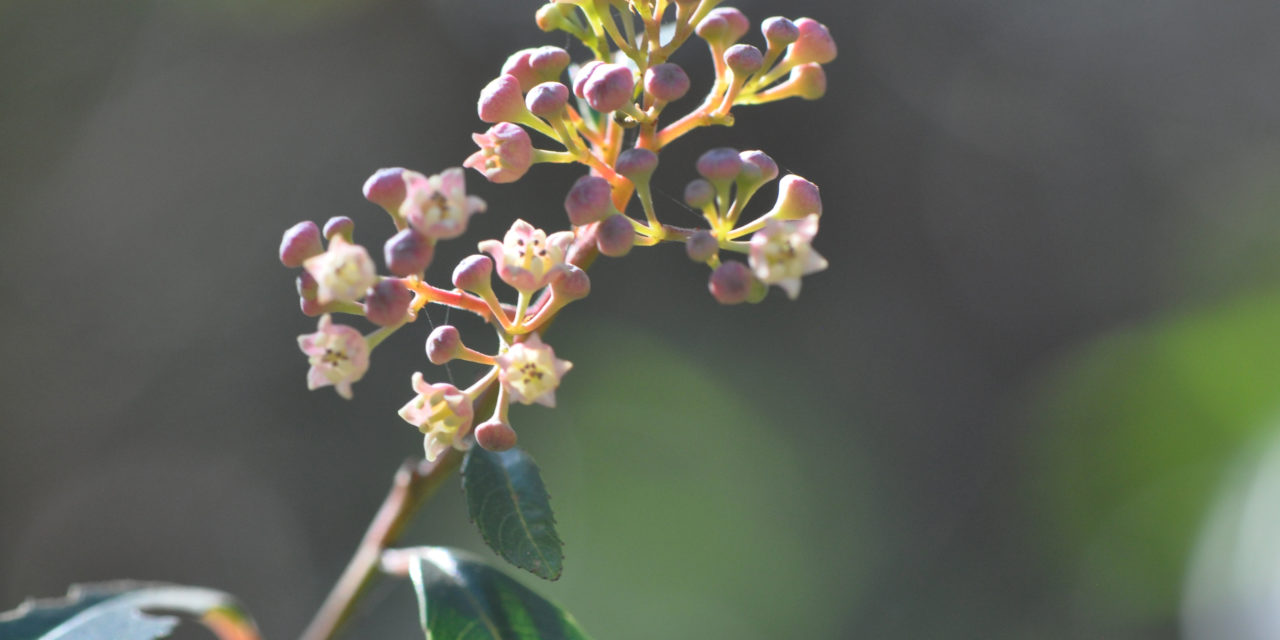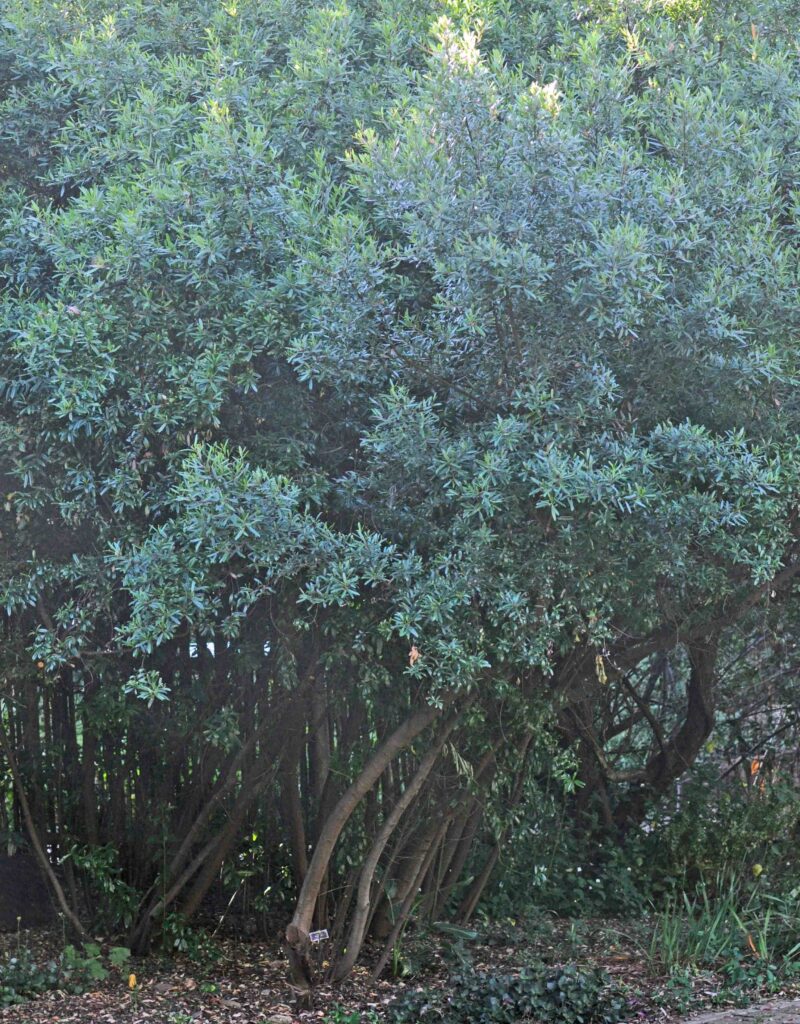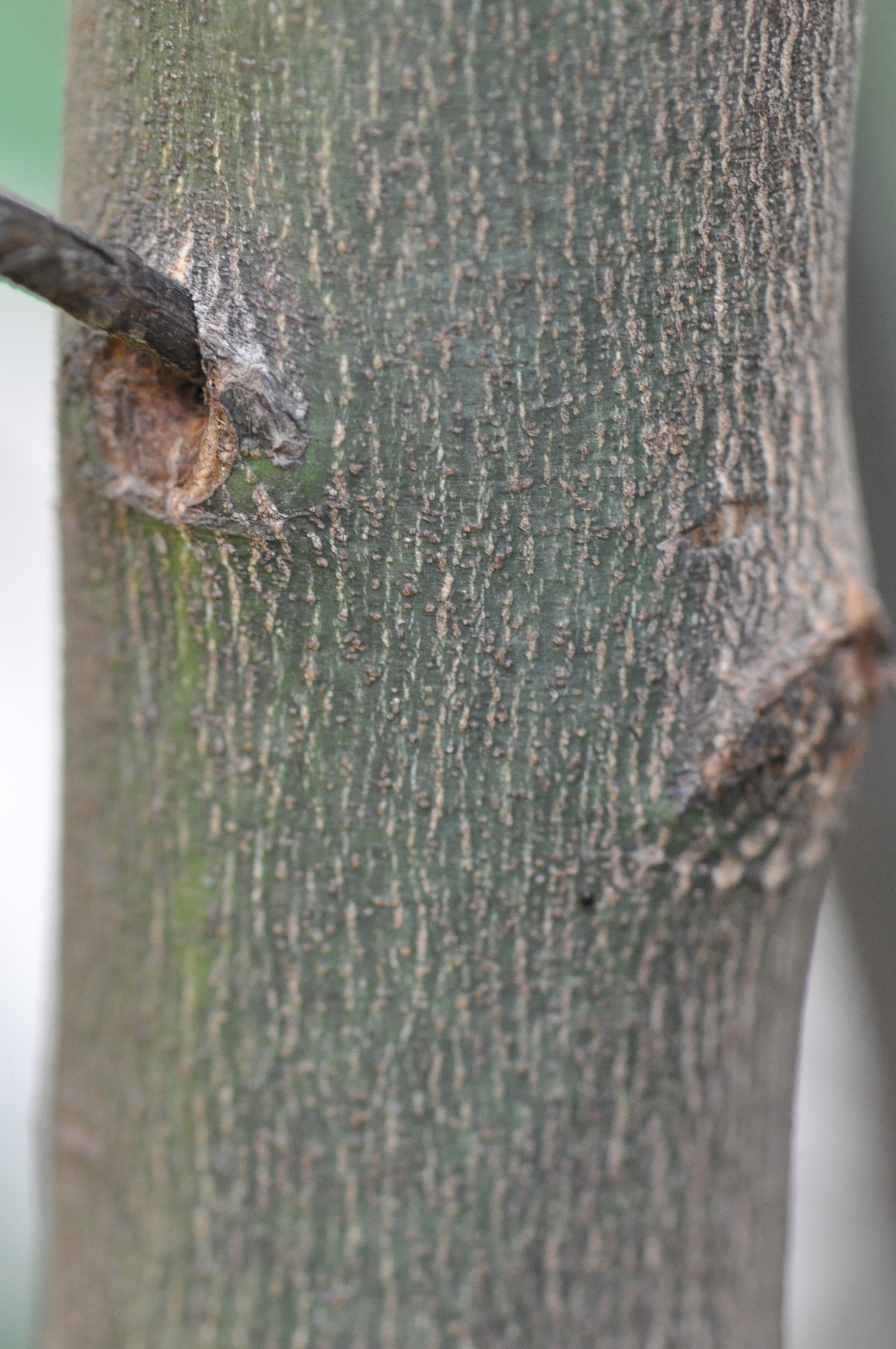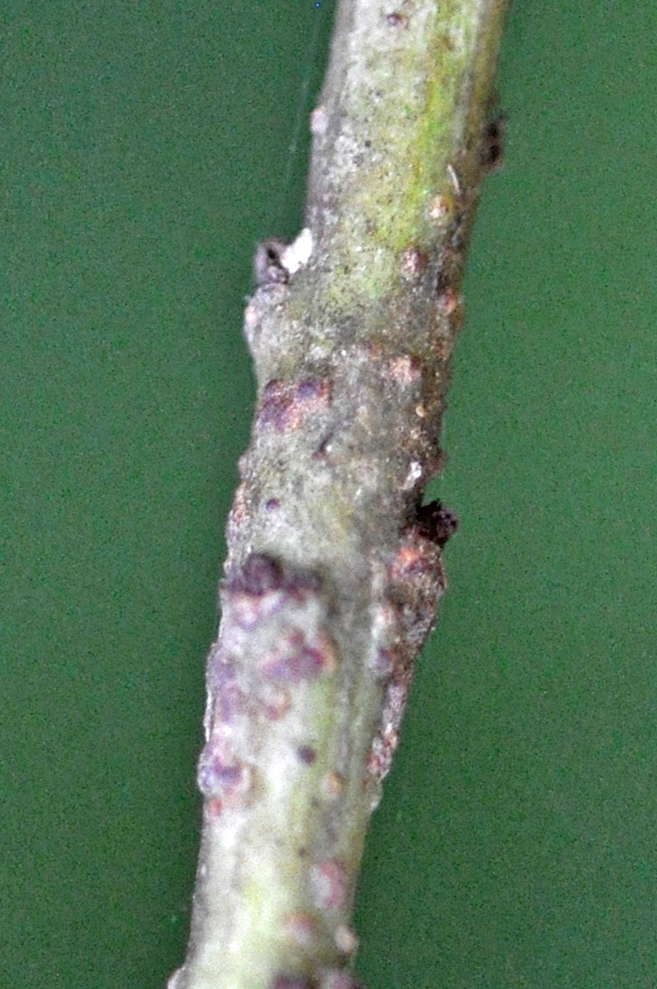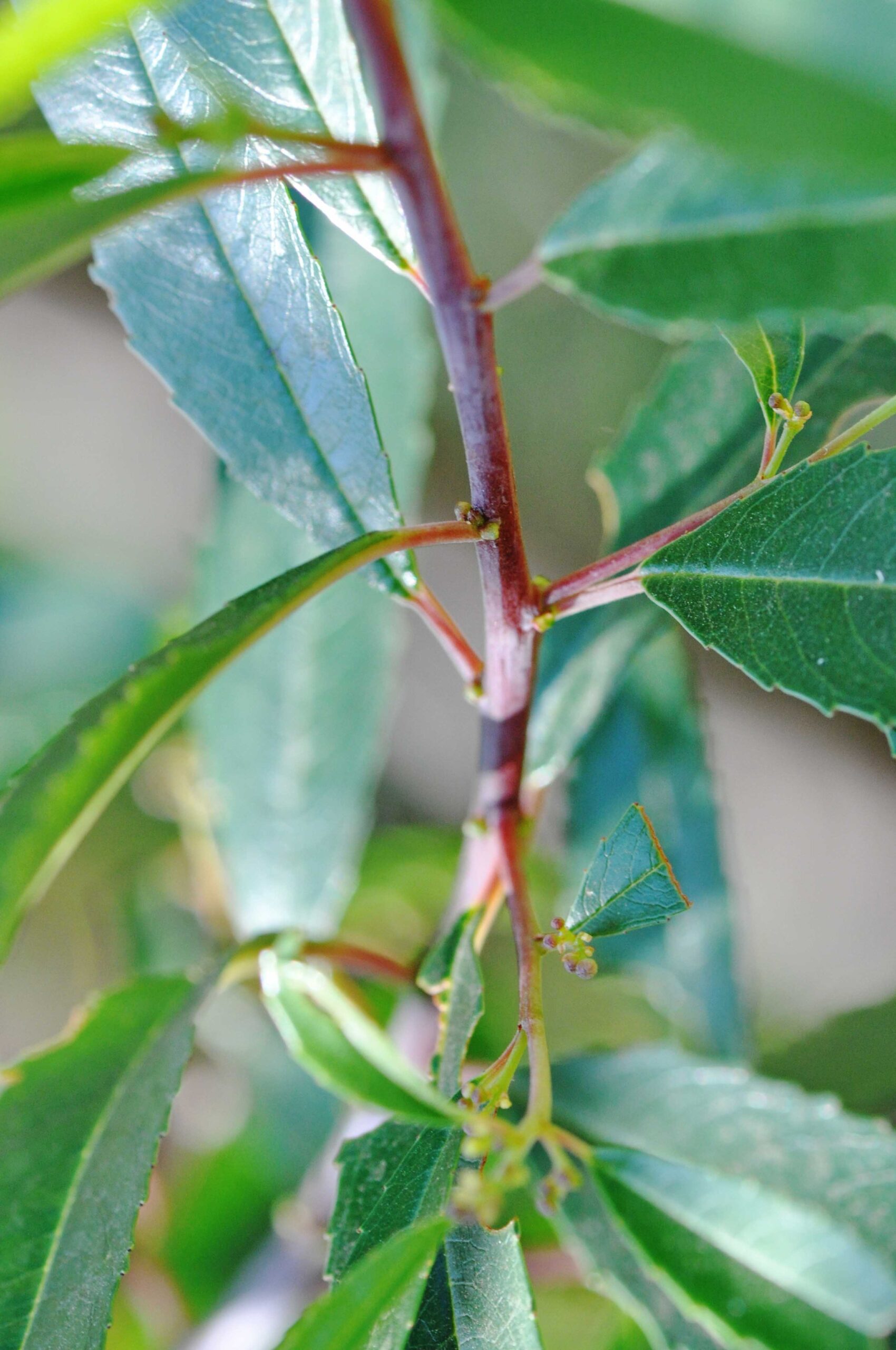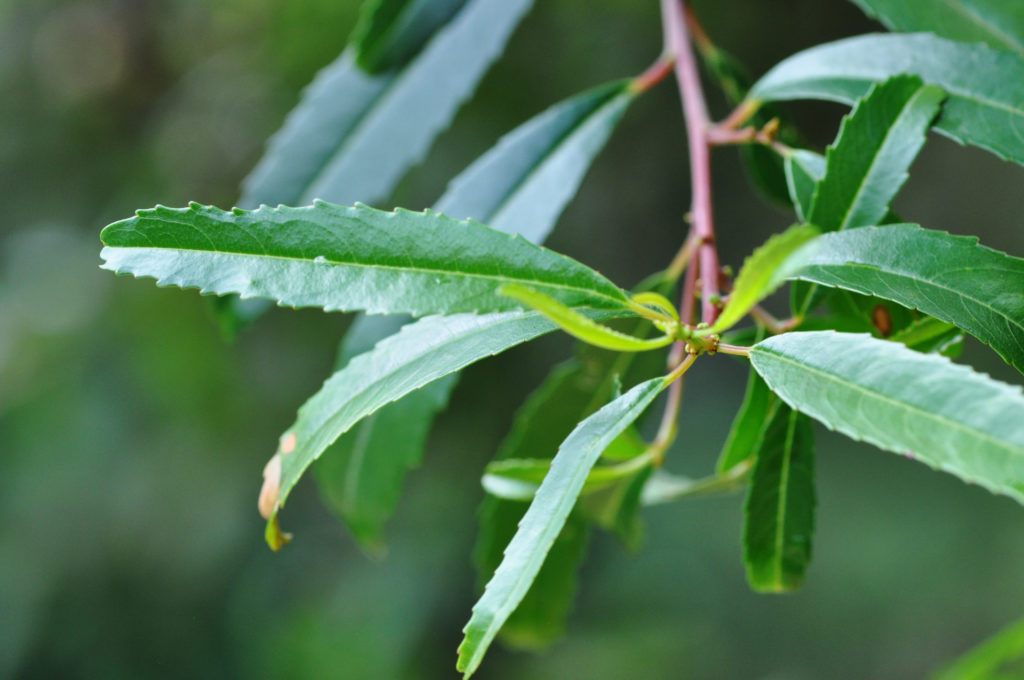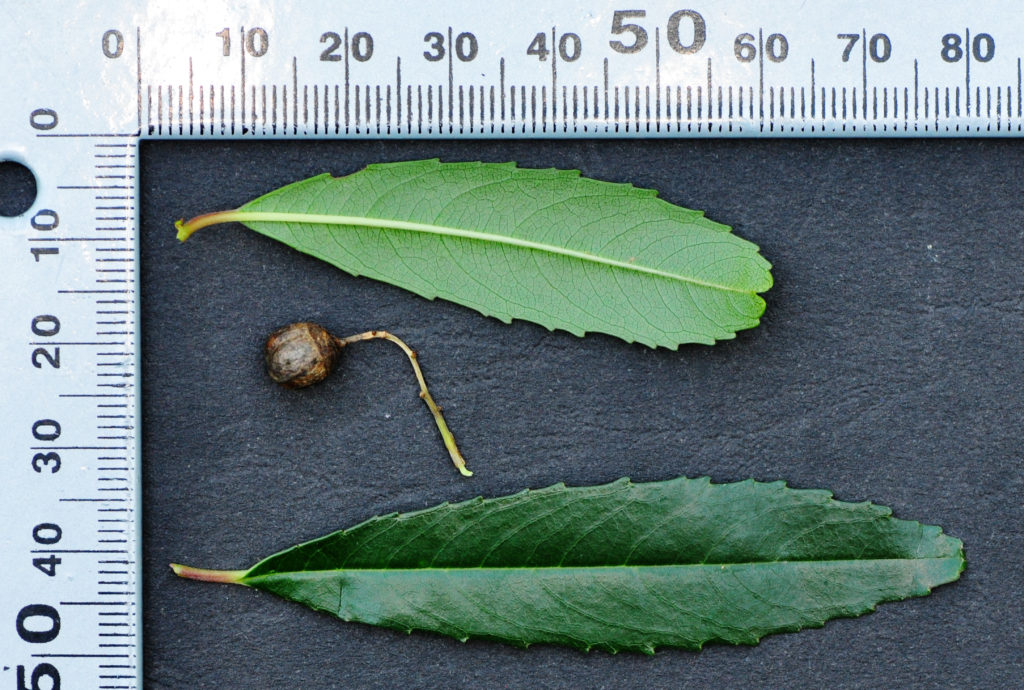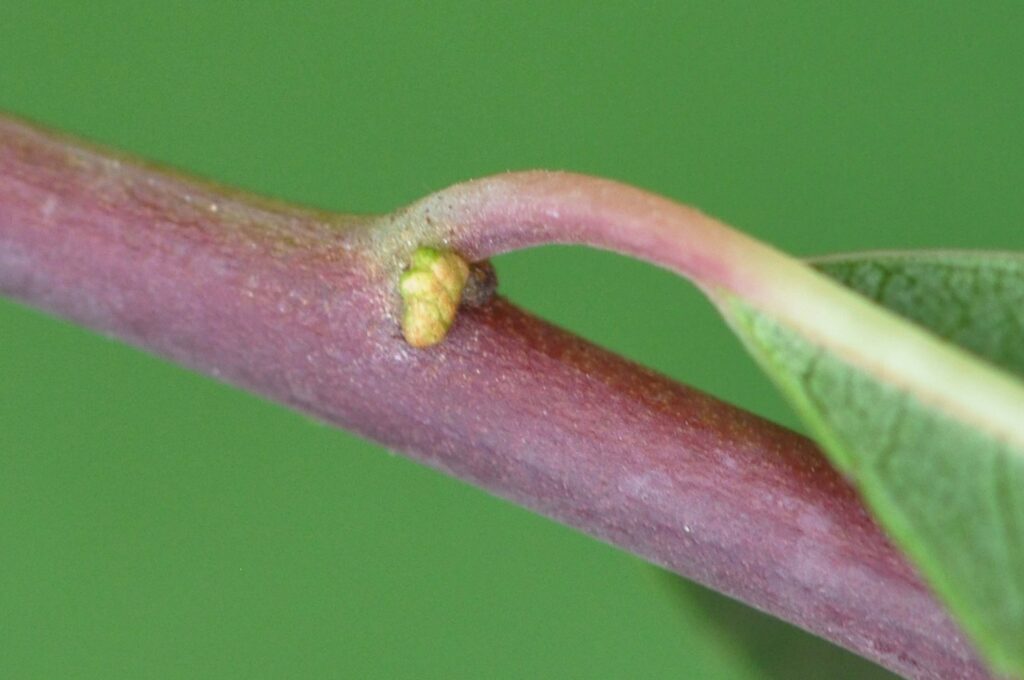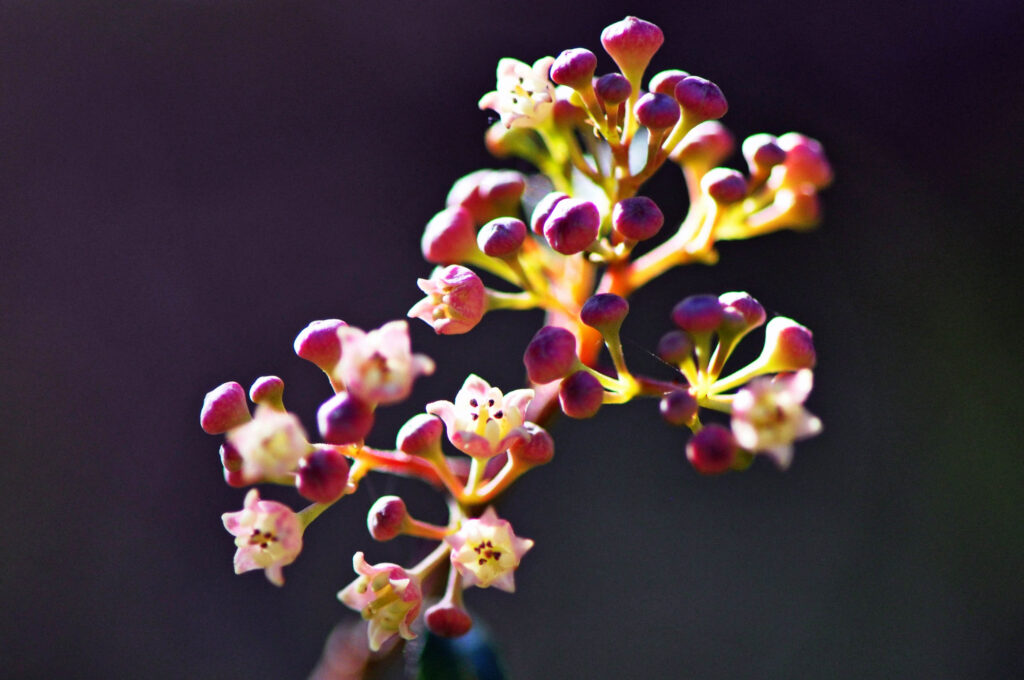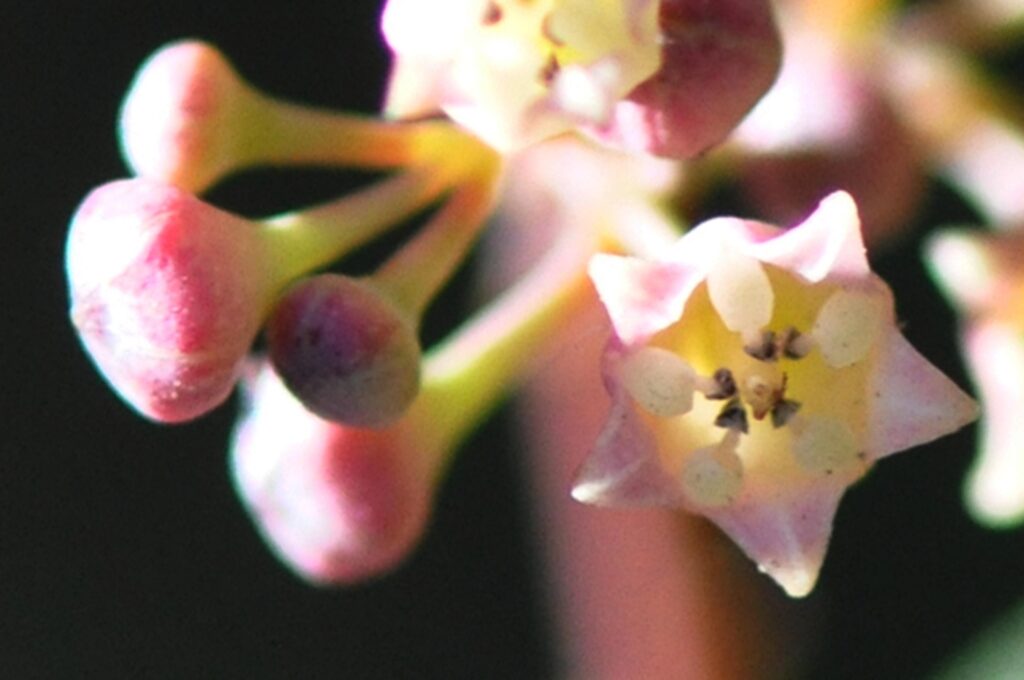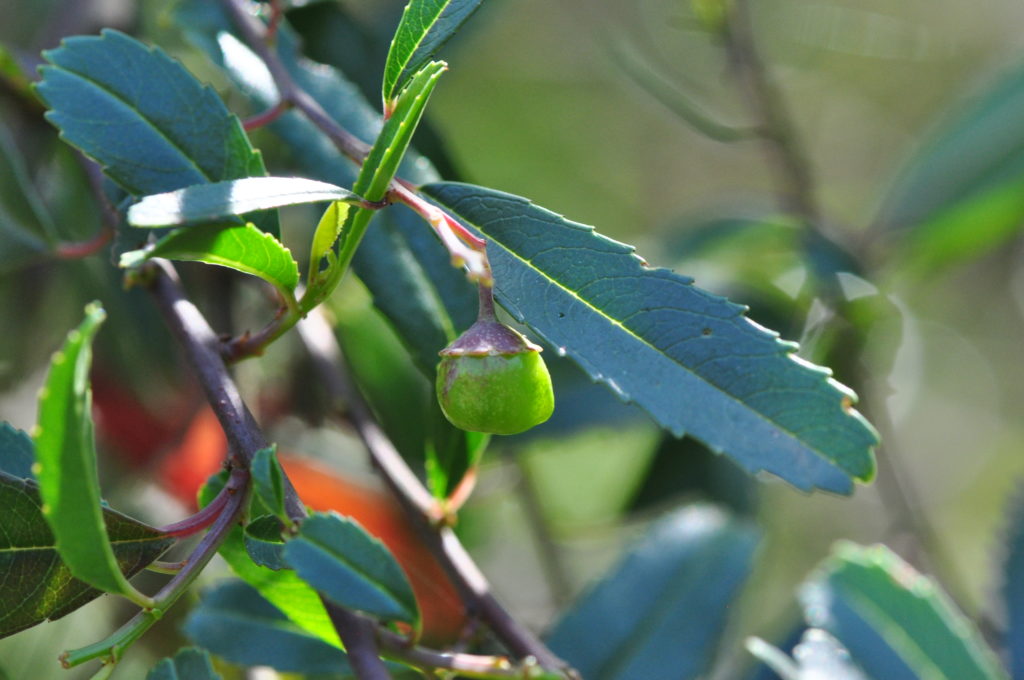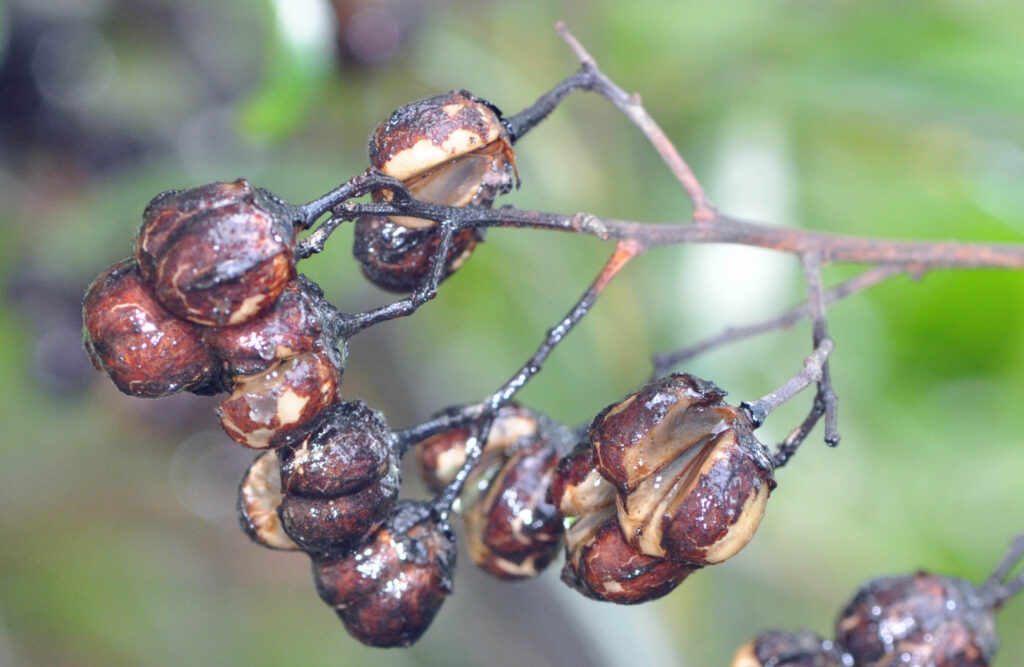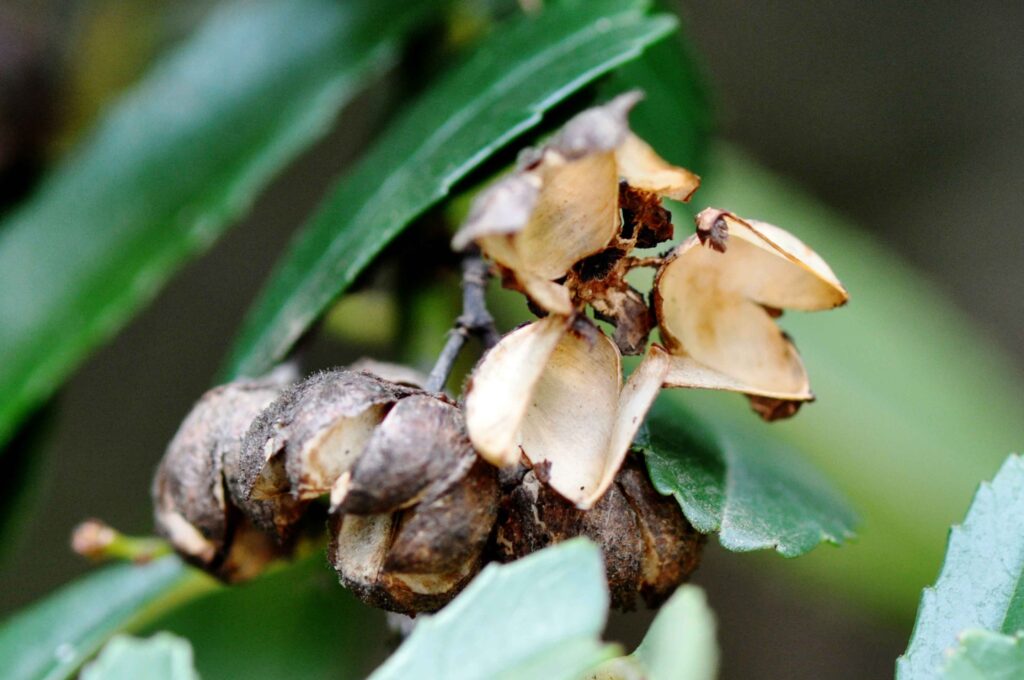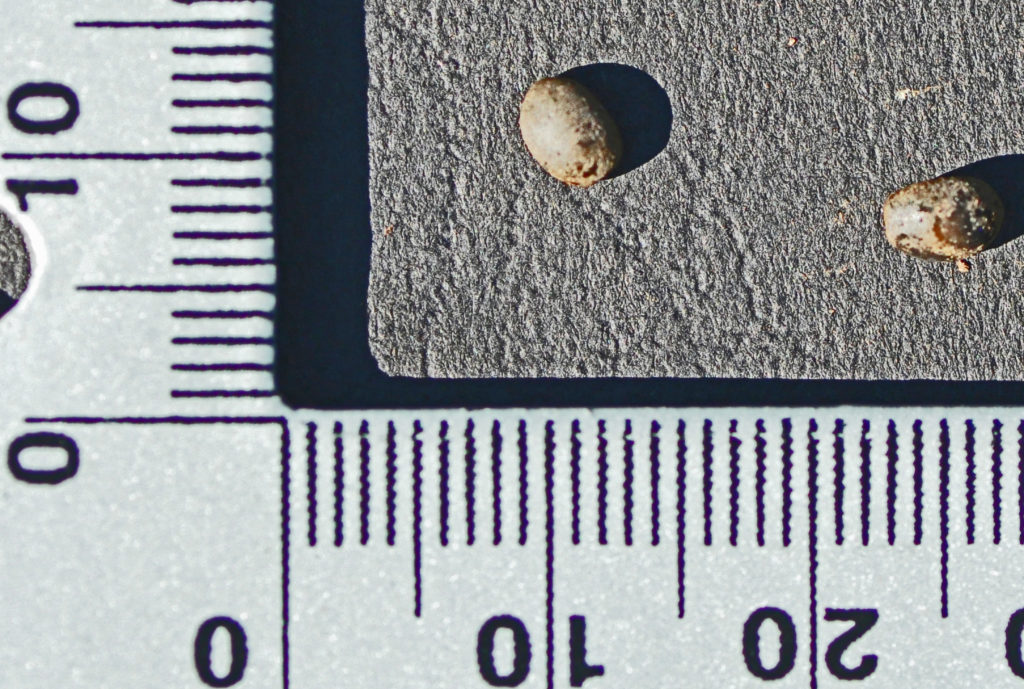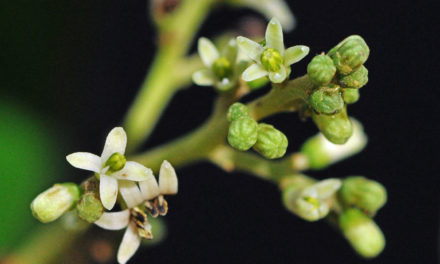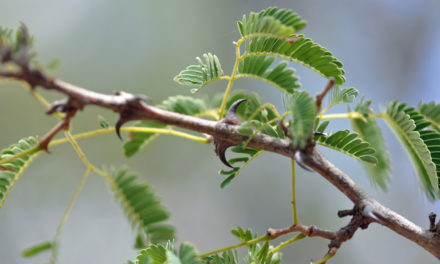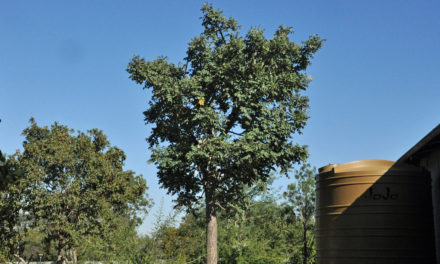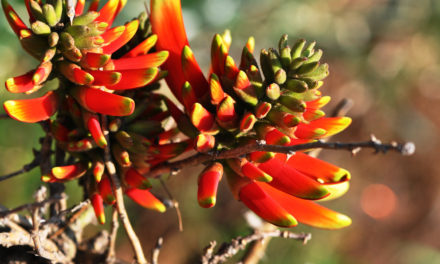General Info – summary
This glabrous, small, evergreen shrub or small, unarmed Tree is usually up to 4m high. It has a slender brown trunk + light grey bark and purple-red branches. Leathery, discolorous and alternate Leaves are simple. Margin is irregularly serrated. Small, white, bisexual, 5-merous, regular Flowers are in panicles. The style has 3 short lobes. Fruit is a small woody 3-lobed dehiscent capsule with light brown seeds.
Description
Noltea africana
Previous Names: Ceonothus Africana.
SA Tree No. 453.
Common names: (Afr) Seepblinkblaar, Seepbos. (Eng) Noltia, Soap Bush, Soap Dogwood, Soap Glossy-leaf, Soap Shiny-leaf. (isiXhosa) Amaluleka, Iphalode, Makutula, Umakutula, Umaluleka, Umglindi, Umkhuthuhla. (isiZulu) Umahlahlakwa, Umaluleka.
Family: Rhamnaceae. (Buckthorn Family). This family mainly contains trees and shrubs. It has about 58 genera and 900 species. In South Africa, there are 9 genera and 203 species. Trees on this website include Berchemia, Noltea, Rhamnus and Ziziphus. Leaves are simple and usually alternate, and stipules are present – if only for a short time. Flowers are actinomorphic (regular and symmetric) and a prominent hypanthium (the cup-like receptacle usually derived from the fusion of floral envelopes and androecium, and on which are seemly borne calyx, corolla and stamens) is present. Sepals are well developed, and Petals are free and in 4’s or 5’s. The Calyx is tubular, and sepals do not overlap. The free petals arise from the calyx tube or from the outer margin of the disc. The 4-5 Stamens arise with, and opposite to the petals. Anthers have up to 2 pollen sacs and pollen is released through longitudinal slits. The Ovary is usually superior and has 2-5 chambers. Fruit is a drupe, which is partly enclosed by a persistent Calyx. Most members have adapted to dry climates.
Name derivation: Noltea Named after Ernst Ferdinand Nolte (1791-1875) professor of Botany at the University of Kiel. africana – of Africa. In southern Africa, Noltea africana is the only species.
Conservation: National Status: L C. (Least Concern). Assessment: 2005 (J.E. Victor & A.E. van Wyk). Population trend is stable but rare.
Tree
The unarmed plant is glabrous (hairless). The Tree (photo 90) is usually up to 2m but may reach 9m high. It may also be a shrub. The Bark (photo 462) is light grey and smooth. Branchlets are reddish to purple (photo 342) and tend to weep slightly. Old leaf base remains are raised on the young stem (photos 462 & 798). On photo 798 are visible Lenticels (usually raised corky elongated areas on the plant that allows the uncontrolled interchange of gases with the environment).
- 90. 2017/03/28. Walter Sisulu NBG. Photo: David Becking.
- 462. 2014/02/25. Walter Sisulu NBG. Photo: David Becking.
- 798. 2017/02/07. Walter Sisulu NBG. Photo: David Becking.
- 342. 2014/06/24. Walter Sisulu NBG. Photo: David Becking.
Leaves
On this evergreen tree, the alternate or spirally arranged Leaves (photo 459) are simple (have a single blade which may have incisions that are not deep enough to divide the blade into leaflets). They are oblong-lanceolate or elliptic and are up to 7 x 1,8cm (photo 950). N.B. Leaf length excludes the petiole (leaf base). Leaves are leathery and discolorous (having upper and lower surfaces of leaves different colours). They are glossy dark green above, and much paler green below (photo 950). The yellowish Midrib on the lower surface protrudes. Veins are slightly visible on both sides. The Apex is narrowly rounded and sharp tipped or may be indented (photo 950). The Base tapers. The Margin is irregularly serrated (photo 459). The Petiole (leaf stalk) is short and reddish (photo 183). Stipules (basal appendages of the petiole) are small, greeny-yellow and gland-like (photo 950).
- 459. 2014/02/25. Walter Sisulu NBG. Photo: David Becking.
- 950. 2014/11/25. Walter Sisulu NBG. Photo: David Becking.
- 186. 2014/12/02. Walter Sisulu NBG. Photo: David Becking.
Flowers
Reddish flower buds are about 3mm in diameter (photo 343) and open into small white, 5-merous short lived Flowers. These flowers are bisexual and actinomorphic (Regular, symmetrical. Flowers are vertically divisible into similar halves by more than 1 plane passing through the axis). The flowers occur in leaf axils or terminally in Panicles (indeterminate, branched inflorescence with stalked flowers – photo 343). The 5-lobed Calyx tube is widely bell-shaped. The ovate lobes are about the same size as the tube. The Corolla has 5 Petals that are shorter than calyx tube. These hood-like petals embrace the shorter 5 Stamens (photo 348). The Anthers have 2 pollen sacs and pollen is released through longitudinal slits. These stamens do not protrude beyond the corolla. There is a single Pistil (a unit of the Gynoecium, the female element of the flower, composed of the Ovary, Style and Stigma). Here the half-inferior Ovary is partially attached to the calyx and has 3 locules. Each locule contains a single ovule. The Style has 3 short lobes. (Aug-Sep +).
- 346. 2014/06/24. Walter Sisulu NBG. Photo: David Becking.
- 348. 2014/06/24. Walter Sisulu NBG. Photo: David Becking.
Fruit
The initially green Fruit (photo 78) is an almost spherical, 3-celled Capsule (a dry fruit resulting from the maturing of a compound ovary that usually opens at maturity by one or more lines of dehiscence). The persistent Calyx forms a saucer shape reaching nearly one-third along the young fruit capsule (photo 78). This pea-sized, 3-valved capsule becomes blackish and up to 1cm in diameter (photo 460). Each of the 3 woody valve opens backwards for seeds dispersal (photo 561). The interior of the valves is a light colour and the exterior becomes dark brown (photo 561). Seeds are light to dark brown (photo 127). One face is convex and the other has a keel. (Sep-Nov).
- 78. 2014/09/23. Walter Sisulu NBG. Photo: David Becking.
- 460. 2014/02/25. Walter Sisulu NBG. Photo: David Becking.
- 561. 2014/02/25. Walter Sisulu NBG. Photo: David Becking.
- 127. 2014/03/06. Walter Sisulu NBG. Photo: David Becking.
Distribution & Ecology
This plant is Endemic in South Africa. (Endemism is the ecological state of a species being unique to a defined geographic location). This plant is located in the Western Cape, Eastern Cape and northwards to KwaZulu-Natal. It is common in sand on coastal forests, forest edges and riparian (relating to wetlands adjacent to rivers and streams) habitats. In forests, it may be present in groves. It may occur in open scrub (general term for vegetation with low, woody plants, which typically forms an intermediate community between grass or heath and high forest) and occurs from sea level to high altitudes. It is very hardy and grows in sun or partial shade. Flowers attract insects, including bees and butterflies.
Ethnobotany
When crushed Leaves and Twigs are and rubbed in water, a soapy Lather is generated. This lather is used for washing. Planted Seeds are fast growing.
References
Boon, R. 2010. Pooley’s Trees of eastern South Africa. Flora and Fauna Publications Trust, Durban.
Coates Palgrave, M. 2002. Keith Coates Palgrave Trees of Southern Africa, edn 3. Struik, Cape Town.
Lawrence, G. H. M, 1951. Taxonomy of Vascular Plants. The Macmillan Company, New York. Tenth Printing 1965.
Palmer, E. & Pitman, N. 1972. Trees of southern Africa. Balkema, Amsterdam, Cape Town.
van Wyk, B. & van Wyk, P. 1997 Field guide to Trees of Southern Africa. Struik, Cape Town.
von Staden, L. & van Wyk, A.E. 2018. Noltea africana (L.) Endl. National Assessment: Red List of South African Plants version 2020.1. Accessed on 2023/09/14.
http://witbos.co.za/plant.aspx?plant=noltea-africana
https://en.wikipedia.org/wiki/Noltea
http://growwild.co.za/trees/noltea-africana
http://posa.sanbi.org/flora/browse.php?src=SP

